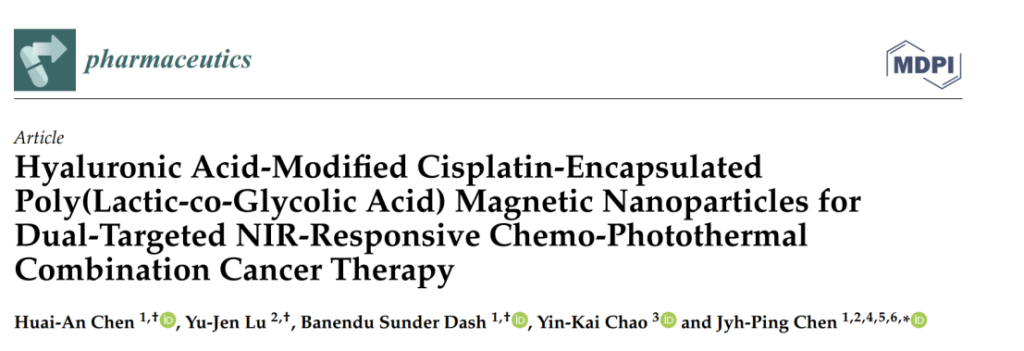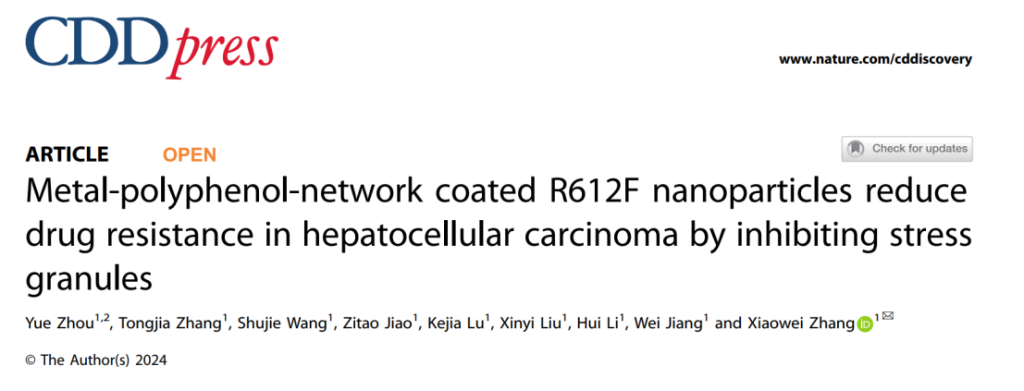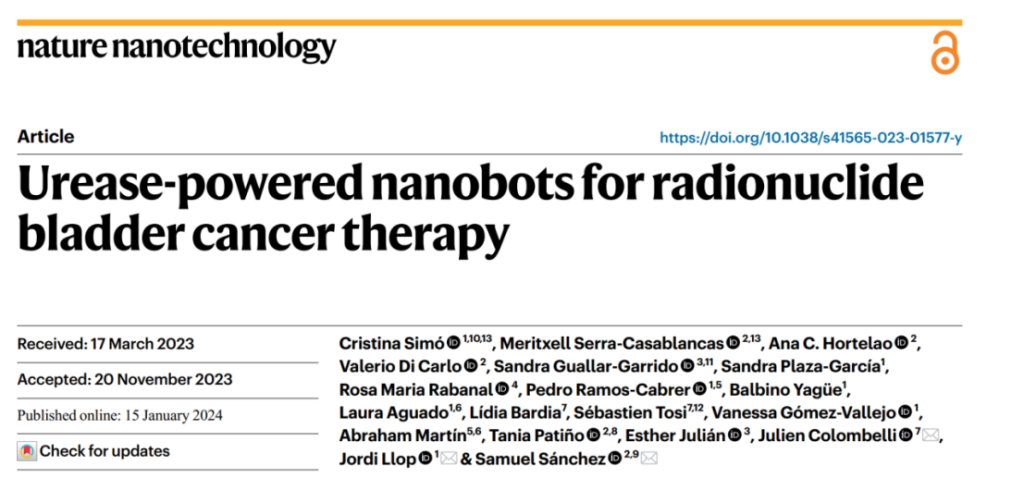Editor: Nina
Introduction: Enhancing Nanomedicine Transport for Targeted Cancer Therapy
Recent advancements in intratumoral transport mechanisms of nanomedicines are revolutionizing cancer therapy by overcoming traditional barriers such as inefficient drug delivery, low tumor penetration, and drug resistance. Nanomedicines have the potential to enhance therapeutic efficacy by improving the accumulation and targeting of drugs at tumor sites. This progress is largely driven by innovations such as self-propelling nanobots, surface-functionalized nanoparticles, and intelligent drug release systems. These new systems are designed to enhance tumor penetration, minimize side effects, and offer multimodal treatment options that combine chemotherapy, photothermal therapy, and radiotherapy. The following studies demonstrate how these new mechanisms are setting the stage for the next generation of nanomedicines.
Active Movement and Targeting in Osteosarcoma Treatment

Yu et al. (2023) introduced a triple-functional magnetic gel (Fe3O4/GOx/MgCO3@PLGA) designed to address the dual challenge of treating osteosarcoma and repairing bone defects. Traditional osteosarcoma therapies face limitations due to tumor recurrence and the destruction of bone tissue, making it difficult to achieve both tumor treatment and bone regeneration. The active movement of magnetic nanoparticles under an alternating magnetic field (AMF) enabled precise targeting of the tumor site, while the glucose oxidase (GOx)-mediated starvation therapy reduced tumor resistance by inhibiting heat shock protein (HSP) expression. Moreover, the gel’s ability to trigger mild hyperthermia in combination with starvation therapy provided a synergistic effect, enhancing the therapeutic outcome. This multimodal strategy not only treated the tumor but also facilitated bone regeneration, showcasing the potential of active transport mechanisms for complex cancer therapies.
pH Responsiveness and Intelligent Release for Glioblastoma Therapy

Chen et al. (2023) developed hyaluronic acid (HA)-modified PLGA magnetic nanoparticles for the targeted delivery of cisplatin (CDDP) to glioblastoma cells. Glioblastoma is notoriously difficult to treat due to its rapid growth, drug resistance, and limited penetration of chemotherapeutic agents. The nanoparticles, modified with HA, actively targeted CD44 receptors on glioblastoma cells, increasing the specificity and efficiency of CDDP delivery. Additionally, the nanoparticles were designed to respond to the acidic tumor microenvironment, ensuring pH-sensitive drug release for enhanced therapeutic precision. The combination of chemotherapy with near-infrared (NIR) light-responsive photothermal therapy further strengthened the overall treatment effect. This system highlights the role of pH responsiveness and intelligent release mechanisms in overcoming the delivery limitations traditionally associated with chemotherapy.
Multimodal Therapy and Synergistic Effects in Hepatocellular Carcinoma

Zhou et al. (2024) explored the use of metal-polyphenol-network (MPN)-coated nanoparticles for reducing drug resistance in hepatocellular carcinoma (HCC) by targeting stress granules (SGs). HCC is often resistant to chemotherapy, largely due to the formation of SGs that protect tumor cells from apoptosis. The researchers designed MPN nanoparticles to deliver the R612F mutation, which inhibited SG formation by maintaining the hypermethylation state of p110α. This strategy reduced the resistance of HCC cells to sorafenib, a chemotherapy drug, and enhanced the overall anti-tumor effect. The use of MPN nanoparticles exemplifies how intelligent drug delivery systems can combine multiple therapeutic mechanisms—targeting SGs, modulating the tumor microenvironment, and providing a synergistic effect with chemotherapy. The ability to target specific cellular stress responses represents an innovative approach to enhancing the therapeutic efficacy of chemotherapy.
Real-Time Monitoring and Intelligent Response for Bladder Cancer Treatment

Simó et al. (2024) introduced urease-powered mesoporous silica nanoparticle (MSNP) nanobots for targeted radionuclide therapy in bladder cancer. Traditional bladder cancer therapies often suffer from poor drug diffusion and retention within the bladder. By utilizing urease-powered nanobots, this study enhanced drug delivery by enabling the nanobots to self-propel through the bladder fluid in response to urea, promoting better distribution and targeting within the tumor site. The nanobots were radiolabeled with iodine-131 for effective radionuclide therapy, demonstrating an eightfold increase in tumor accumulation compared to passive nanoparticles. Real-time imaging using PET and optical contrast techniques allowed for precise monitoring of the nanobots’ behavior within the tumor, showcasing the potential of these intelligent nanobots for real-time feedback and environmental adaptability. The integration of self-propulsion with radionuclide therapy offers a promising solution for overcoming the challenges associated with conventional bladder cancer treatments.
Conclusion: Intelligent and Adaptive Transport Mechanisms for Next-Generation Cancer Therapies
The advancements in intratumoral transport mechanisms for nanomedicines are driving the development of more efficient and targeted cancer therapies. From active movement and targeting to pH-responsive drug release, the ability of nanomedicines to intelligently respond to their environment is reshaping cancer treatment paradigms. The combination of multimodal therapies, such as chemotherapy, photothermal therapy, and radionuclide therapy, with real-time monitoring and feedback mechanisms, enables more precise and adaptive treatment strategies. As these transport mechanisms continue to evolve, they hold the potential to significantly improve the effectiveness of cancer therapies while minimizing side effects, paving the way for more personalized and effective treatments in the future.
References:
1. Chen, Huai-An, et al. “Hyaluronic acid-modified cisplatin-encapsulated poly (lactic-co-glycolic acid) magnetic nanoparticles for dual-targeted NIR-responsive chemo-photothermal combination cancer therapy.” Pharmaceutics 15.1 (2023): 290.
2. Simó, Cristina, et al. “Urease-powered nanobots for radionuclide bladder cancer therapy.” Nature Nanotechnology 19.4 (2024): 554-564.
3.Yu, Kexiao, et al. “Engineering a triple-functional magnetic gel driving mutually-synergistic mild hyperthermia-starvation therapy for osteosarcoma treatment and augmented bone regeneration.” Journal of Nanobiotechnology 21.1 (2023): 201.
4.Zhou, Yue, et al. “Metal-polyphenol-network coated R612F nanoparticles reduce drug resistance in hepatocellular carcinoma by inhibiting stress granules.” Cell Death Discovery 10.1 (2024): 384.
